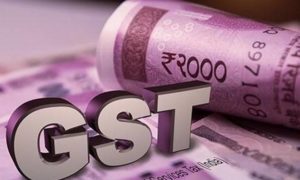GST Network has already asked its technology providers to get the portal ready to handle the increased capacity by the end of this year.
Also Read – What are the transactions you can do at a Digital Banking Unit (DBU)?
Starting from January 1, 2023, businesses, with an annual turnover of more than Rs 5 crore, under the Goods and Services Tax, will have to move to e-invoicing. The move is likely to aid the government in identifying false claims and plug revenue leakages. The step is the latest phase in the project to broaden the ambit of this GST framework by the next fiscal year (FY).
According to a report by Economic Times, the GST Network has already asked its technology providers to get the portal ready to handle the increased capacity by the end of this year. The government is also targeting to bring all businesses with turnover above Rs 1 crore under this framework by the next FY.
The electronic invoice system is a mechanism through which business-to-business (B2B) invoices are electronically authenticated by GST Network (GSTN) for further use on the common GST portal. Under the e-invoice system, every invoice will have an identification number issued against it by the Invoice Registration Portal (IRP), which is to be managed by the GSTN.
All the data on invoices are transferred from the einvoice1.gst.gov.in portal in real-time to not only the GST portal but also to the e-way bill portal. Thus, the requirement for manual data entry while filing GSTR-1 returns is eliminated. Manual data entry is also not needed for the generation of part-A of the e-way bills, as the information is passed directly by the IRP to the GST portal.
The e-invoice system provides multiple benefits, including resolving and plugging the gap in data reconciliation under GST. Filling this gap can reduce mismatch errors. Additionally, the system has provisions for backward integration and automation of the tax return filing process. This implies that the necessary details of the invoices would be automatically filled in the various returns.
Digitisation in this manner will also make genuine input tax credits available to relevant authorities and businesses much faster.
E-invoicing B2B transactions began on October 1, 2020, with firms having a turnover of over Rs 500 crore coming under its ambit. Two years later, the ambit of the e-Invoice framework had expanded to businesses having aggregate annual turnover of Rs 10 crore and above.
Also Read – PM Modi: GeM portal giving MSMEs new business opportunities; boosting Vocal for Local mission
The move has resulted in more taxpayers coming into the net, with the GST collection numbers rising from about Rs 1.05 lakh crore in October 2020 to about Rs 1.48 lakh crore in July 2022.





































